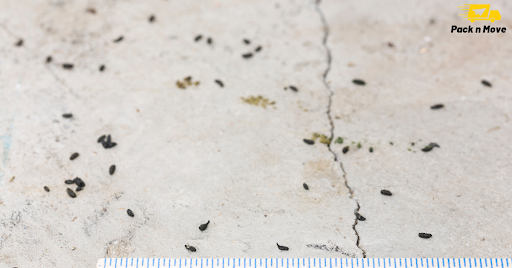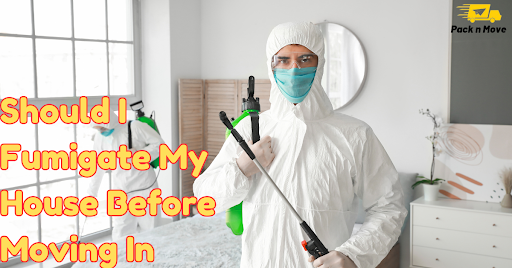Moving into a new home is an exciting milestone, but before unpacking your belongings, it’s crucial to ensure your house is free of pests. Pests like termites, cockroaches, bed bugs, and rodents can pose serious health risks and cause structural damage to your property. Fumigating your house before moving in might seem like an extra task, but it could be the key to starting life in your new space with peace of mind.
This guide explores whether you should fumigate your home before moving, the benefits, alternatives, and tips for maintaining a pest-free home.
Understanding Fumigation: What It Is and How It Works
Fumigation is a pest eradication method involving sealing off an area and introducing a gas pesticide to eliminate pests. This treatment is particularly effective against stubborn infestations, as it penetrates deeply into cracks, crevices, and inaccessible areas where pests hide.
The process is designed to target a variety of pests, including termites, bed bugs, ants, and cockroaches, which can infest a home unnoticed. Fumigation is usually performed by professional pest control services, ensuring thorough coverage and safety for your family and property.
Benefits of Fumigating Before Moving Into a New Home
One of the primary benefits of fumigating a new house is eliminating hidden pests that might not be immediately visible during a pest inspection. For example, termites can silently damage the woodwork, and bed bugs might be lurking in floorboards or carpets left by previous occupants.
Fumigating also serves as a preventive measure, disrupting pest life cycles and ensuring that your home is less likely to experience infestations shortly after moving in. This is especially important if the house has been unoccupied, as pests often thrive in such environments.
Signs Your New Home Might Need Fumigation

Not every home requires fumigation, but certain signs indicate it may be necessary. For instance, if you notice visible pest activity, such as ant trails, rodent droppings, or dead insects, it’s a clear indicator of an existing problem.
Similarly, if the house has a history of pest issues, such as reports of termite inspections, or if you spot structural damage like hollowed wood or chewed wires, fumigation is a wise precaution. Properties in areas prone to pest activity, such as damp environments, are also higher-risk candidates for fumigation.
DIY Fumigation vs. Hiring Professionals: Which Is Better?
Opting for DIY pest control might seem cost-effective, but it often falls short in addressing severe infestations. DIY methods typically include using over-the-counter sprays, traps, and baits, which can handle surface-level pests but might not eliminate deeply hidden ones.
Hiring professional pest services, on the other hand, ensures comprehensive treatment. Professionals use advanced integrated pest management (IPM) techniques to identify the root cause of infestations and implement long-lasting solutions. For a significant infestation or for added peace of mind, professional fumigation is the better choice.
Preparing Your Home for Fumigation
Before fumigation, certain steps must be taken to ensure the process is effective and safe. Start by removing valuables, food items, and plants from the house. Any sensitive or essential items should be stored securely or moved out temporarily.
Additionally, safety is paramount. Arrange for your family and pets to stay elsewhere during the treatment period. Professional pest control companies often provide guidelines to ensure proper preparation, which may include sealing or covering furniture and unplugging electronic devices.
The Fumigation Process: What to Expect

The fumigation process typically lasts 24–72 hours, depending on the size of your home and the extent of the infestation. The house is sealed using tarps or other materials to contain the pesticide gas, ensuring it penetrates all areas effectively.
After the gas is introduced, the pest control team monitors its distribution and concentration to ensure optimal results. Once the process is complete, the home is ventilated to remove any remaining gas, and a thorough inspection is conducted to verify the success of the treatment.
Post-Fumigation Tips for a Pest-Free Home
After fumigation, it’s essential to clean your home thoroughly to remove any chemical residues. Wipe down surfaces, wash bedding and curtains, and air out the house for at least a day to ensure safety.
Preventive measures should also be implemented to keep pests from returning. Seal entry points such as cracks in walls, repair any leaks to avoid creating moisture issues, and maintain a clean environment to deter pests from finding food or shelter.
Alternatives to Fumigation: When It’s Not Necessary
Fumigation is not always the best or only solution. For minor pest problems, eco-friendly options like essential oils, boric acid, or diatomaceous earth can be effective. These methods are safer for the environment and pose fewer health risks.
Targeted treatments are another alternative. For example, bait stations can address ant infestations, while localized sprays or traps work well for rodents. Consulting with a pest control professional can help determine the best approach for your specific situation.
Expert Tips for Long-Term Pest Prevention
Maintaining a pest-free home requires ongoing effort. Scheduling regular pest inspections is a proactive way to catch potential problems early. Focus on areas prone to pests, such as basements, attics, and kitchens.
Proper home maintenance also plays a vital role. Ensure your landscaping doesn’t create hiding spots for pests, manage waste effectively, and keep your home free of clutter. These measures reduce the likelihood of pests finding food, water, or shelter in your home.
Final Thoughts
Deciding whether to fumigate your house before moving in depends on various factors, including the condition of the property, its pest history, and your comfort level. While fumigation is an upfront investment, it offers the long-term benefit of a safe and comfortable home.
By eliminating pests and preventing future infestations, fumigation allows you to settle into your new house worry-free. Whether you choose professional services or eco-friendly alternatives, addressing pest concerns early is always worth the effort.
Frequently Asked Questions (FAQs)
- How do I know if my house needs fumigation?
Look for signs of pest activity such as droppings, damage, or reports of past infestations. A pest inspection can provide a definitive answer. - Is fumigation safe for children and pets?
Yes, when performed by professionals. Ensure your family and pets are out of the house during treatment and follow post-fumigation safety measures. - How much does professional fumigation cost?
The cost varies depending on the size of the home and severity of the infestation but typically ranges from $1,000 to $3,000. - Are there eco-friendly alternatives to fumigation?
Yes, natural methods like diatomaceous earth, essential oils, or targeted treatments are viable for minor infestations. - Can I move in immediately after fumigation?
No, you must wait until the home is ventilated and deemed safe by the pest control company, usually 24–72 hours after treatment.
